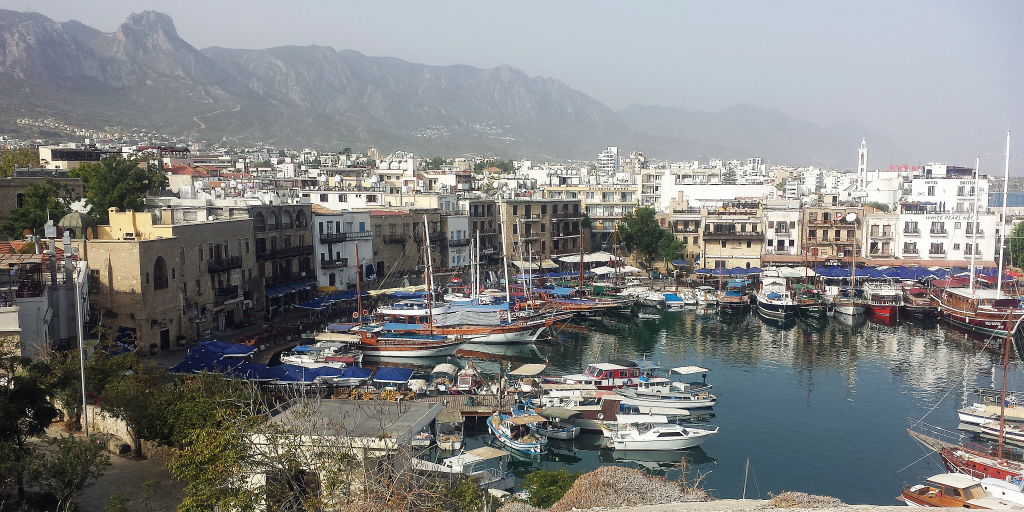
Kyrenia harbour, Girne limani ![]()
Kyrenia (Girne in Turkish) harbour is a must visit place for anybody on holiday in Northern Cyprus. It has the crystal clear Mediterranean Sea to the North and breathtaking mountain line providing a stunning backdrop behind the city and the harbour to the South. Another popular visitor attraction is Kyrenia castle which can be found dominating the north east corner of the harbour.
The harbour features many Venetian buildings and structures which included several warehouses and a tower. During the 17th century, local products like carobs were exported from these warehouses to other countries by sea. Today most of the warehouses have been converted into restaurants and bars.
Located on the Western entrance of the harbour is the Venetian tower and around this area you will find many shops selling Turkish Cypriot wares like hand made bowls, jewellery, keyrings and postcards to carpets.
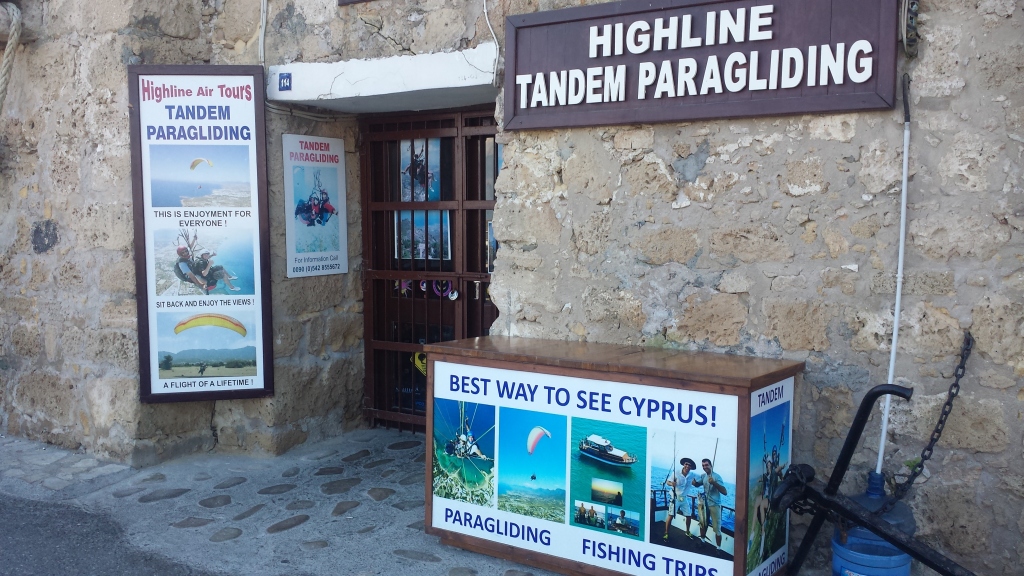
Kyrenia harbour booking office ![]()
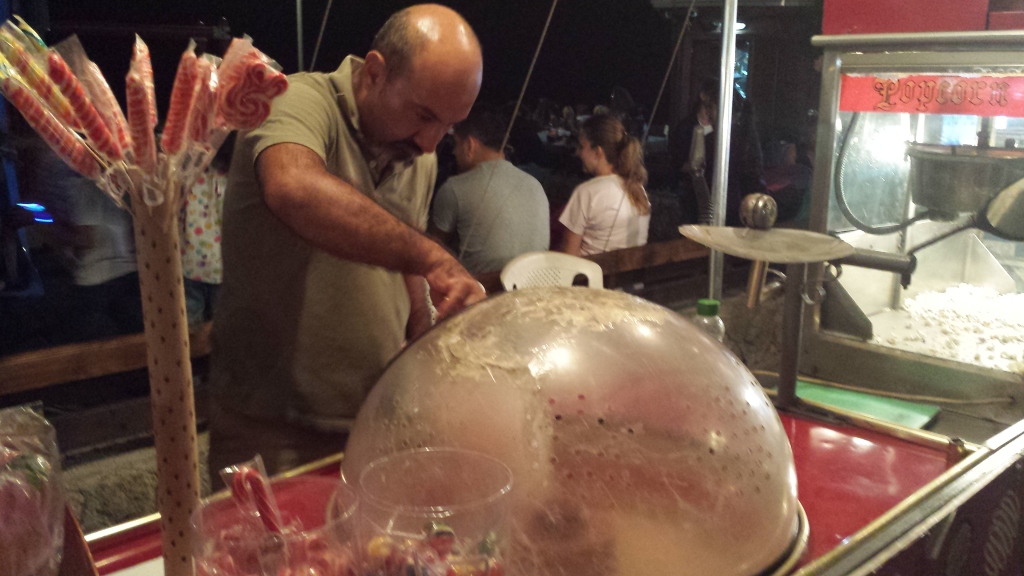
Candyfloss maker ![]()
Kyrenia harbour at night
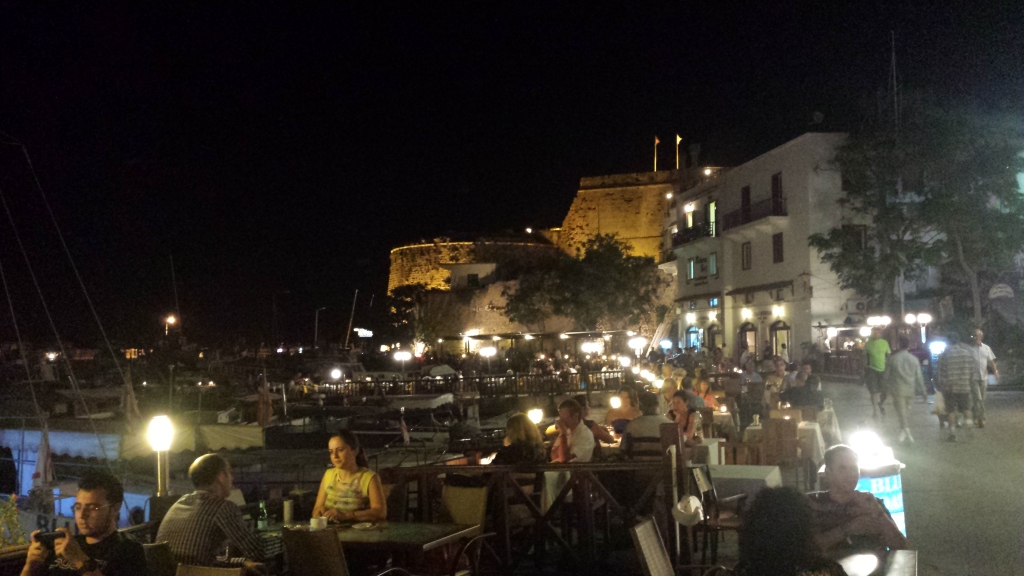
View of Kyrenia castle from the harbour at night ![]()
At night and especially at the weekends Kyrenia harbour really comes alive and becomes a bustling place which is especially popular with the tourists. Here you will find a variety of bars and restaurants serving meals from freshly caught fish, lobsters or calamari to kebabs, Italian foods which including pizzas and spaghetti as well as traditional Turkish food and meze’s. You will be spoilt for a choice of wines, beers and cocktails. It becomes a whole new place at night and is a wonderful place to spend the evening soaking in the views and atmosphere.
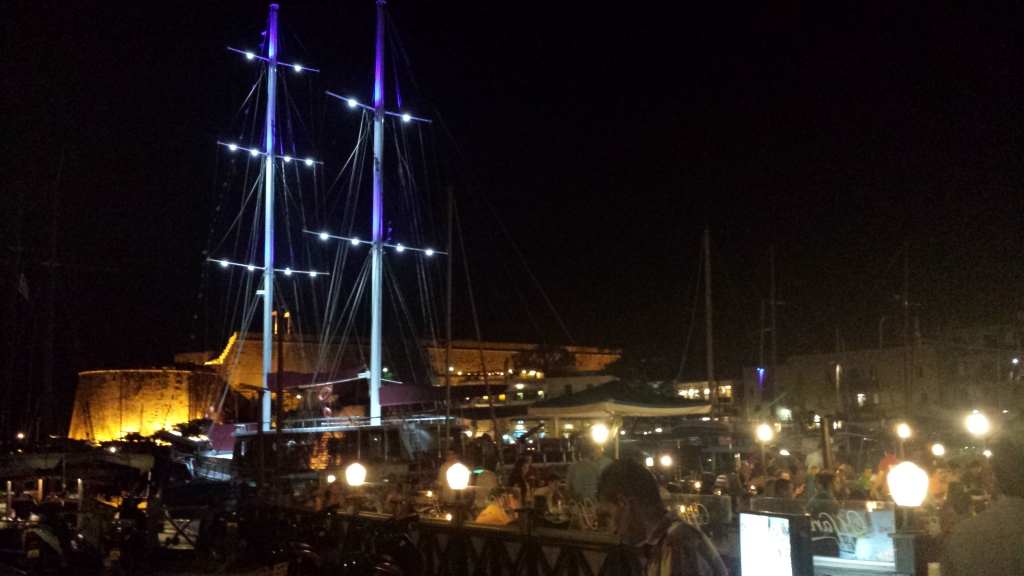
Kyrenia harbour at night ![]()
Exploring around Kyrenia harbour
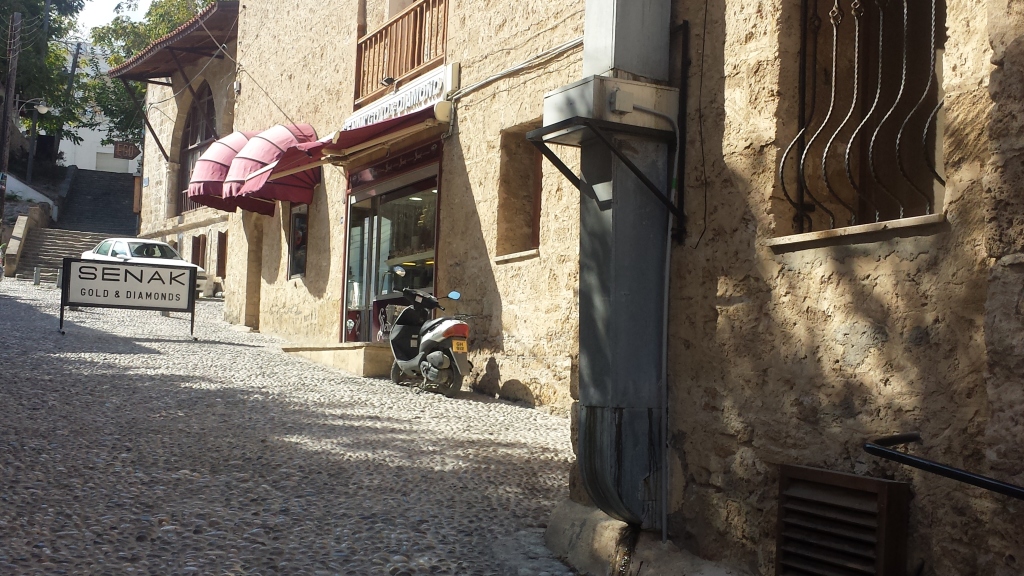
Cobbled street to Aga Cafer Pasa mosque ![]()
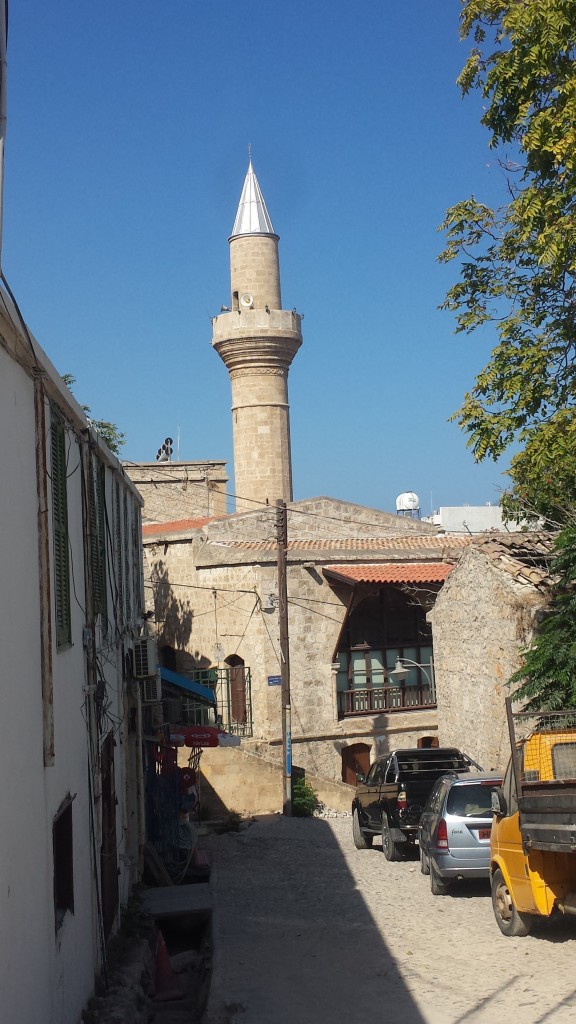
Aga Cafer Pasa mosque minaret ![]()
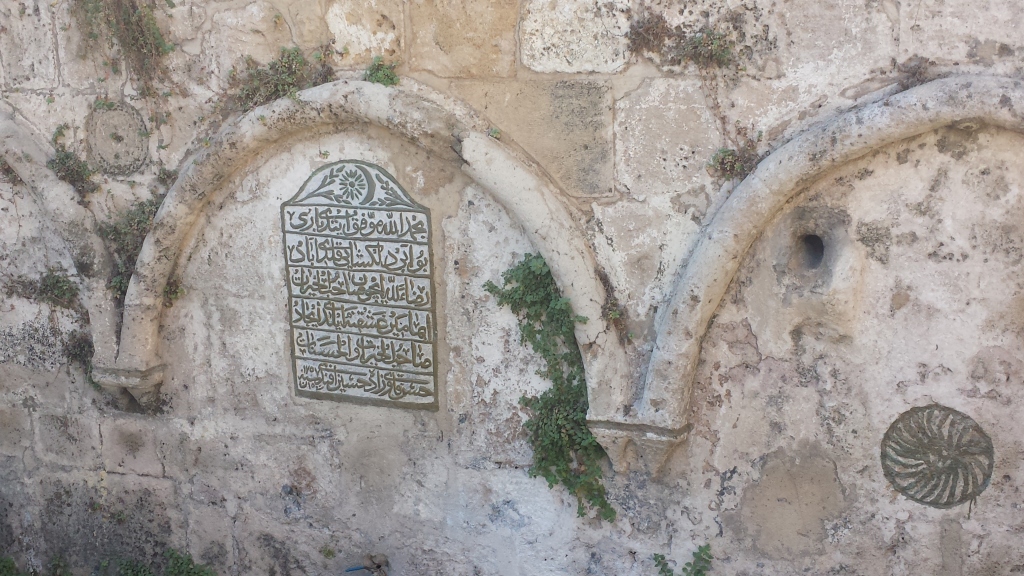
Aga Cafer Pasa spring ![]()
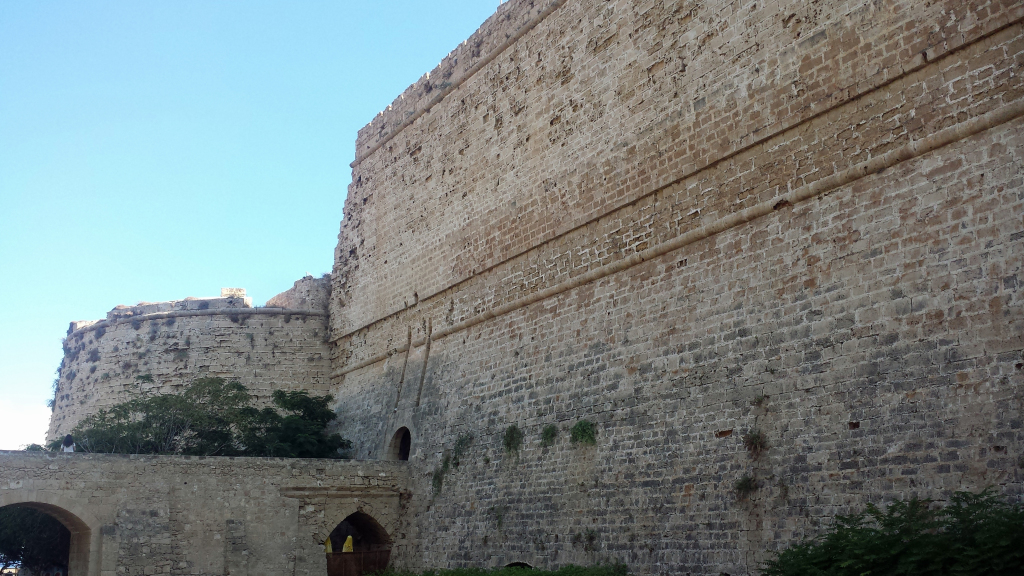
Kyrenia Castle ![]()
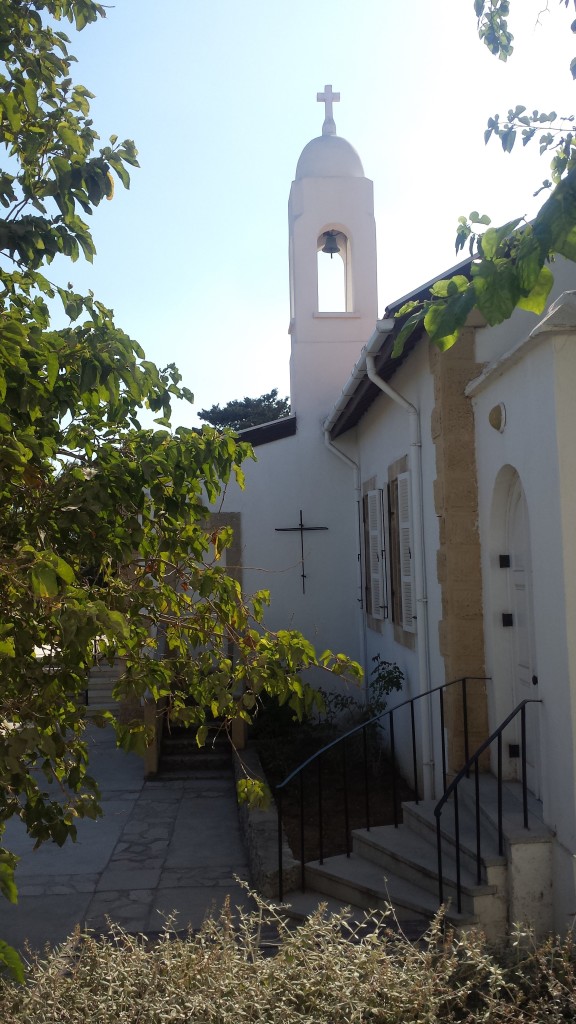
St Andrews Church, Kyrenia ![]()
This charming church is nestled away behind the castle. It was built in 1913 and is still very much a part of the community today. It’s congregation includes people from various countries and cultures. Although it’s only a small church it’s a cool and quiet place to rest and relax.
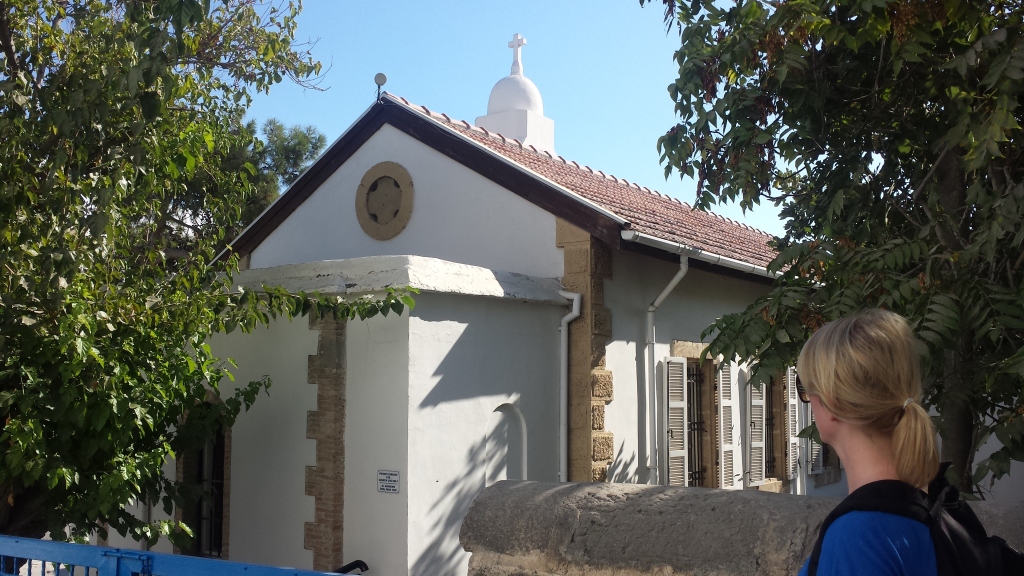
St Andrews Church in Kyrenia ![]()
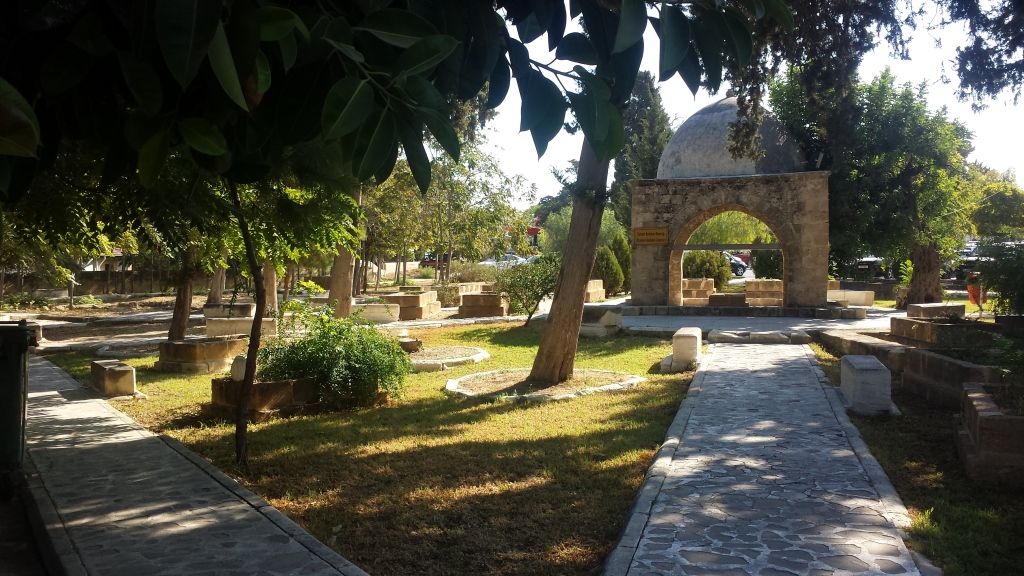
Baldoken Ottoman cemetery, Kyrenia ![]()
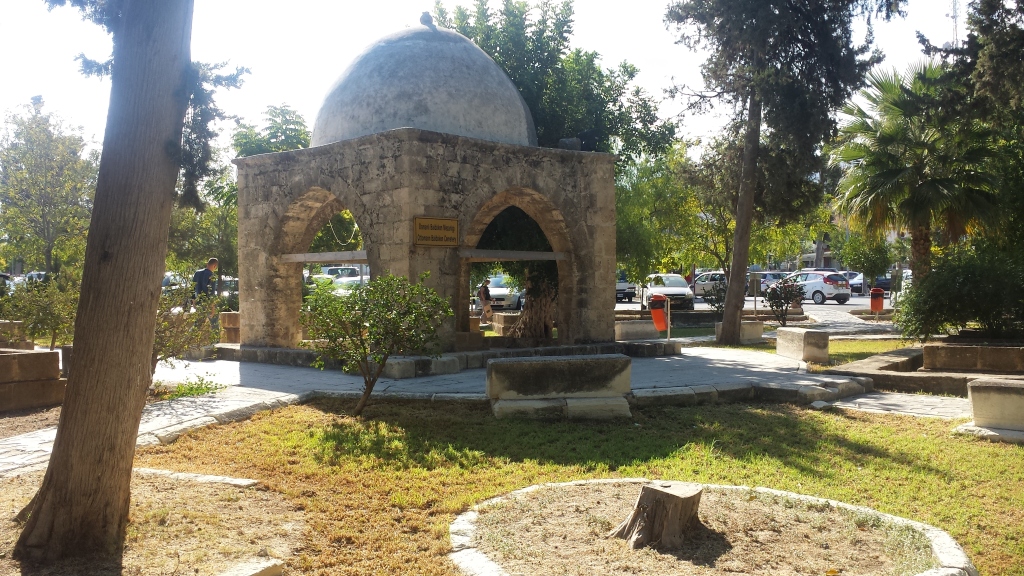
Baldoken Ottoman cemetery, Kyrenia ![]()
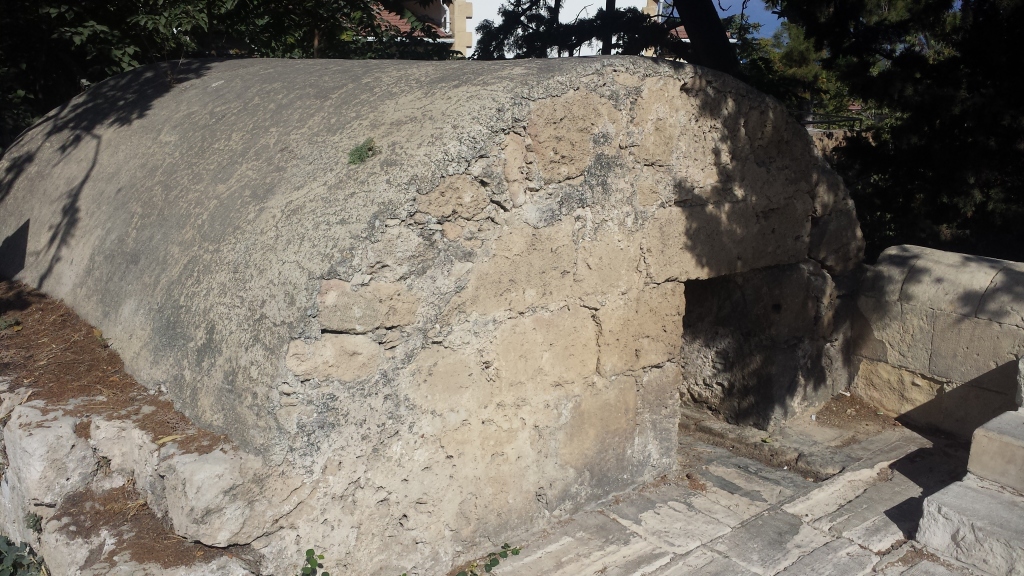
Baldoken Ottoman grave yard cistern, North Cyprus ![]()
The history of Kyrenia & Kyrenia harbour
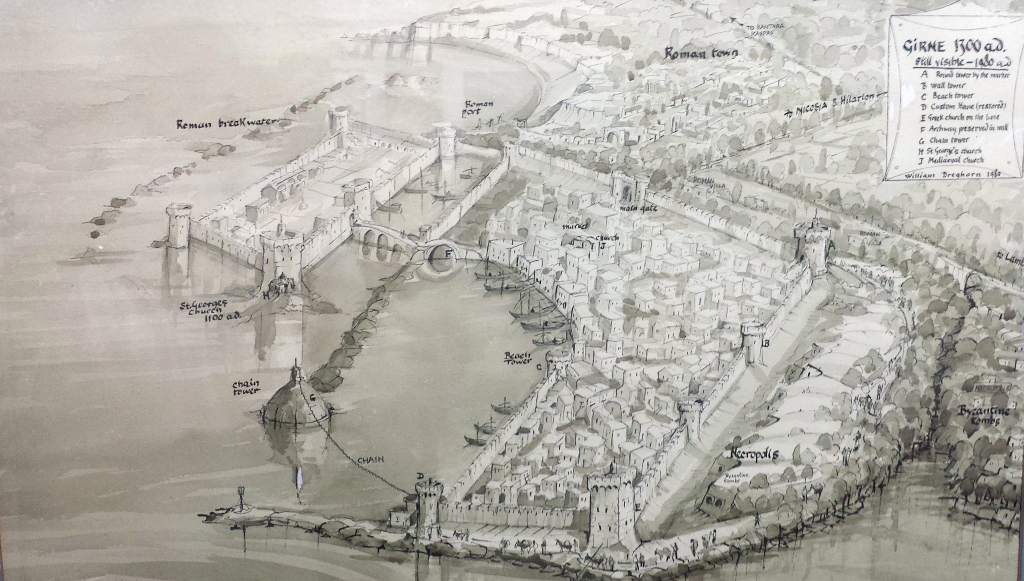
Kyrenia (Girne) 1300 A.D. by William Dreghorn, B.Sc., Ph. D. (Lond.)
The history of Kyrenia harbour is quite an extensive and interesting one.
The original Roman port was situated just East of the current one but unfortunately very little remains now except for a Roman breakwater which today is part of the modern pier.
Throughout the Middle Ages and the Crusader Period, from about 1200 A.D. to 1500 A.D., the the main trade routes to the East were through the Mediterranean. During these times Venice and its merchants became very wealthy and so they extended and built much of what we see around the Harbour and the great castle of Kyrenia which was built to guard their trade.
Not long after this a new sea route was discovered to India by going past South Africa which caused a decline in trade both in Kyrenia as well as other ports in the Mediterranean.
This didn’t mean trade fully came to a stop in Kyrenia, some small trade did still continue. Most notably spices, silk, jewellery, dyes, timber, wool, and in particular the trade was in carobs still continued. Carobs were in big demand as they were used for horse fodder. At the time horses were the main method of travel and carting goods the main transportation method.
Then in 1570 the Ottoman Turks took control of Kyrenia and the town remained under their administration until 1878.
During this time the opening of the Suez Canal in 1869 , once again ushered in a great boom in trade for ports in the eastern Mediterranean and Cyprus once again became an important trading post. To accommodate this, a new jetty, was built on the western side of the harbour. The jetty was built using large quarried blocks of stone.
The Cyprus Convention of 4 June, 1878 saw the Ottomans sign over the control of Cyprus to Great Britain in exchange for their support and formation of a Convention of Defensive Alliance. This informal agreement came to an end when Britain and Turkey found themselves on opposing sides during World War One. In 1955, the Greek Cypriot EOKA campaign led to a state of emergency, Turkish troops then invading and ultimately the division of the island in 1974.
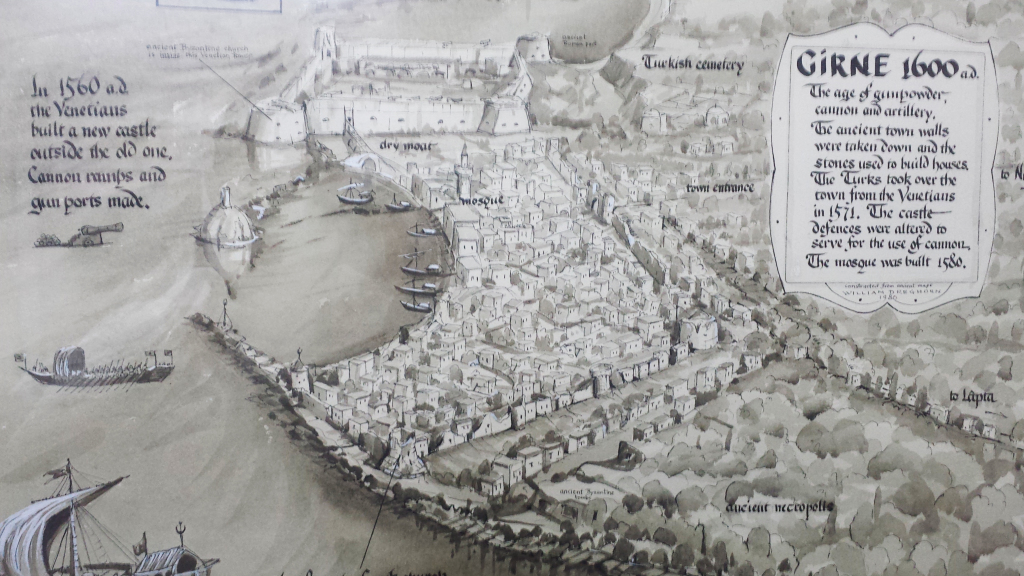
Kyrenia (Girne) 1600 A.D. by William Dreghorn, B. Sc., Ph. D. (Lond)
Photo’s of the harbour
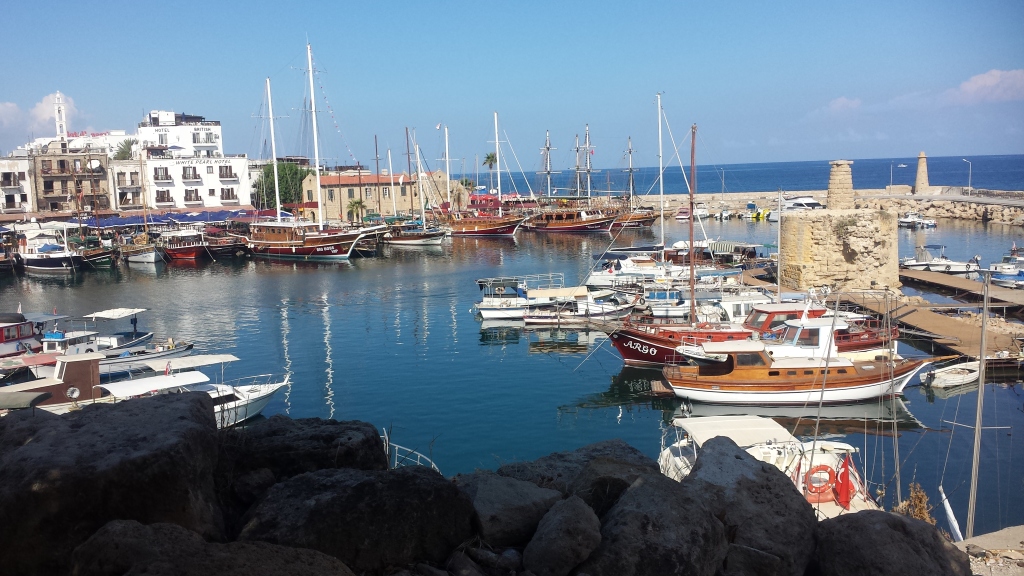
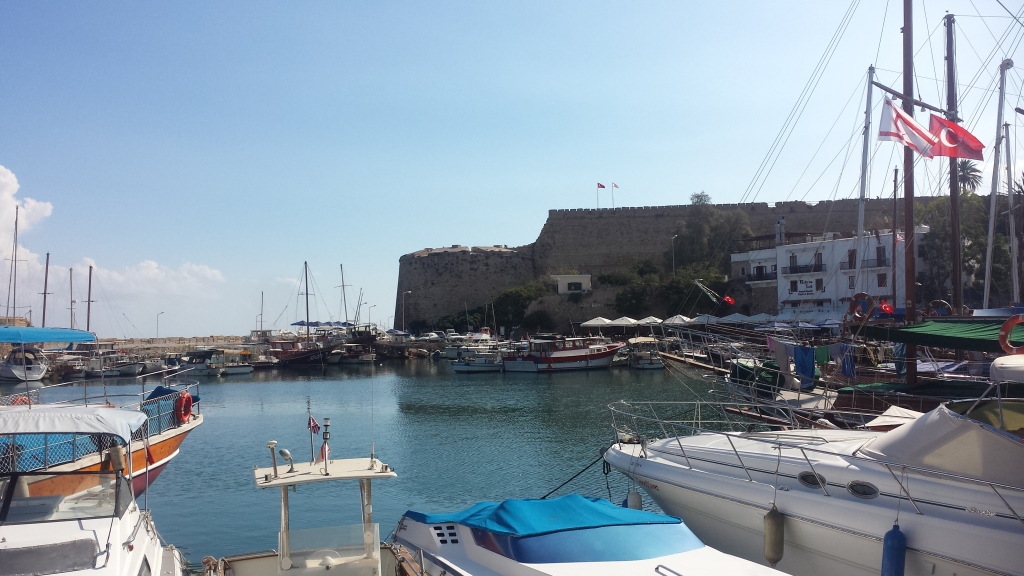
Kyrenia harbour ![]()
